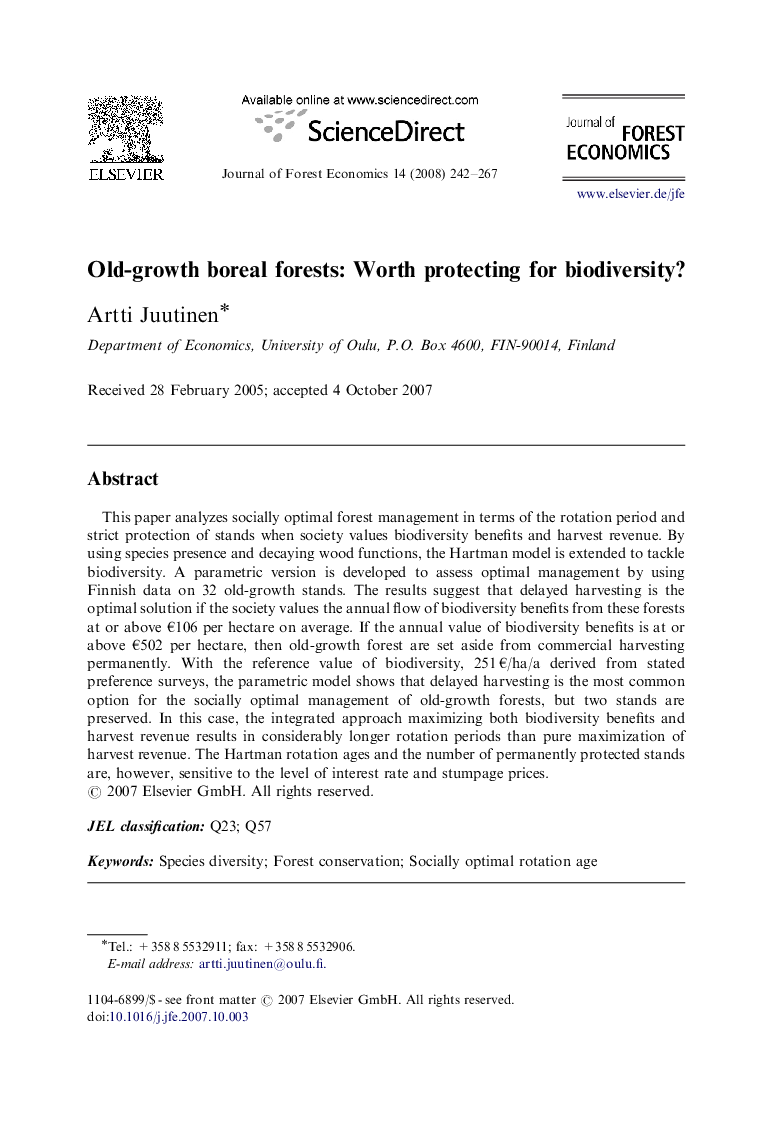| Article ID | Journal | Published Year | Pages | File Type |
|---|---|---|---|---|
| 92189 | Journal of Forest Economics | 2008 | 26 Pages |
This paper analyzes socially optimal forest management in terms of the rotation period and strict protection of stands when society values biodiversity benefits and harvest revenue. By using species presence and decaying wood functions, the Hartman model is extended to tackle biodiversity. A parametric version is developed to assess optimal management by using Finnish data on 32 old-growth stands. The results suggest that delayed harvesting is the optimal solution if the society values the annual flow of biodiversity benefits from these forests at or above €106 per hectare on average. If the annual value of biodiversity benefits is at or above €502 per hectare, then old-growth forest are set aside from commercial harvesting permanently. With the reference value of biodiversity, 251 €/ha/a derived from stated preference surveys, the parametric model shows that delayed harvesting is the most common option for the socially optimal management of old-growth forests, but two stands are preserved. In this case, the integrated approach maximizing both biodiversity benefits and harvest revenue results in considerably longer rotation periods than pure maximization of harvest revenue. The Hartman rotation ages and the number of permanently protected stands are, however, sensitive to the level of interest rate and stumpage prices.
